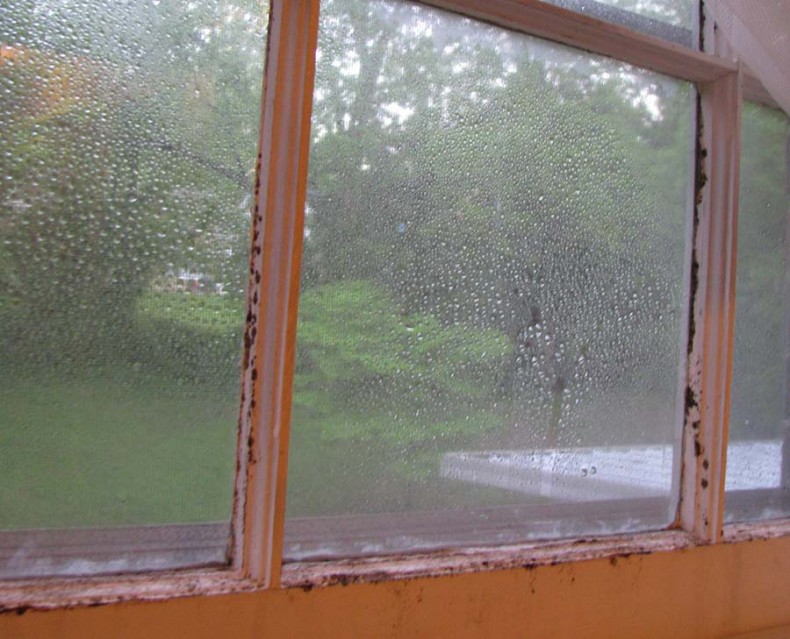Controlling Mold
Moisture is mold’s best friend
By Hannah McKenzieIf window condensation isn’t wiped or dried quickly, mold starts to grow on wooden frames.
Q: I relocated to North Carolina recently. While moving into our rental house, I raised the blinds and found black spots that look like mold all around the edges of the window sashes. It was alarming to find since I have a new baby and want to make sure he isn’t exposed to anything that can harm him. What should I do?
A: Mold and mildew can be terrifying when we’re unsure of how it will impact our health, why it happened, and how to safely clean it up.
Mold spores are around us all the time floating in the air. But mold becomes troublesome when it becomes visible and grows in cool, damp parts of the home, such as shower curtains, near plumbing leaks, damp laundry, bathroom ceilings and single-pane windows.
Each person’s health tolerance of mold is different. People who are sensitive to mold can experience symptoms such as nasal stuffiness, eye irritation, wheezing or skin irritation. Some people, such as those with serious allergies to molds, may have more severe reactions like fever and shortness of breath. Consider talking with your health care provider and reviewing literature from the United States Centers for Disease Control and Prevention to learn more.
The windows in your rental home are likely a single sheet of glass, called single-pane windows. When the outdoor temperatures are chilly and the inside of your home is warm, condensation can form on the interior side of the window glass — just like on a glass of iced tea. If the condensation isn’t wiped or dried quickly, mold starts to grow because the window frame consists of wood (i.e., mold food). Some apartments avoid this by using metal frame single-pane windows.
Mold control methods
The best way to control mold is to control the moisture from window condensation in the following ways (in order from lowest to highest cost):
Routine maintenance
- Keep drapes and blinds open to help speed up drying time and lessen the opportunity for mold growth.
- Monitor windows for condensation and wipe away condensation as soon as possible.
- Wipe away mold or discolorations with a damp soapy rag when needed.
Install exterior or interior storm windows
- Installing these windows will minimize condensation.
- Storm windows must be closed to truly help. Checking for and wiping away condensation will still be needed, just not as often as windows without storm windows.
Go from single- to double-pane
- Replace single-pane windows with double-pane windows to eliminate cold windows and condensation.
Convincing a landlord to add storm windows or install double-pane windows can be challenging due to the high cost, despite the likely benefits of less maintenance, improved comfort, fewer pests and lower energy bills. When looking for your next residence, confirm that windows are double-paned or have storm windows so you spend less or no time wiping away condensation or cleaning up mold.
Thankfully, double-pane windows have been required by the North Carolina Building Code for decades, so most people don’t have to deal with the irritation or worry of window condensation and mold. Just those of us living in older homes.
-
Share this story:


